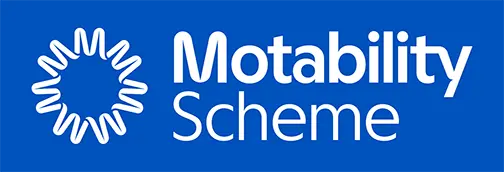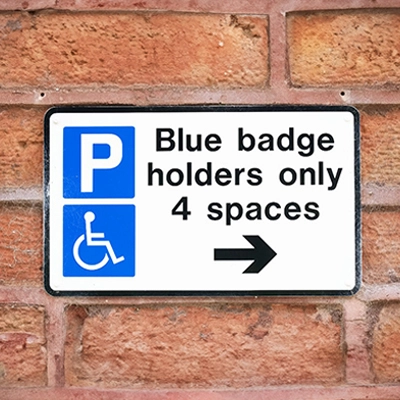
Over 2 million people in the UK have a Blue Badge, which allows them to park in many places that others cannot, and often for longer periods of time. However, it’s important to know what the rules are for using your Blue Badge, so that you don’t get caught out. Whether it’s a local council car park, a private car park or on a public road, the rules can vary immensely across the UK.
To help you better understand some of these rules, take a look at this a short list of things you should know – so that you don’t get a note from a traffic warden.
1. You can park in lots of places…but not everywhere
While your Blue Badge does give you the right to park in many places that others cannot, it does not mean you can park anywhere.
The badge is intended for on-street parking only, and there are different rules for off-street private car parks (such as those provided by hospitals or shopping centres). The Blue Badge parking concessions don’t apply to privately owned roads.
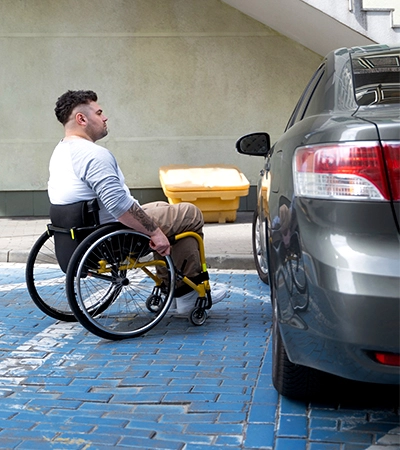
- On single and double yellow lines for up to three hours, unless there is a ban on loading or unloading in that area. Check the local signage to be sure when you’re parking.
- In ‘on-street’ disabled parking bays, which are marked with a blue wheelchair symbol. You can park here for as long as you need, unless the signs say a specific time limit.
- For free where there are parking meters, pay & display machines or spaces where a wheelchair symbol is displayed.
If you’re ever unsure about parking somewhere, you can check the local council’s rules online.
The Government website has an easy tool which lets you type in a postcode, and then takes you to the relevant council’s website so that you can find the parking information you might need.
You might also find it helpful to look on the Government website for the different Blue Badge parking rules in England, Scotland, Wales and Northern Ireland.
2. Your Blue Badge must always be visible
It sounds simple, but one of the most important things to remember when using a Blue Badge is that you must display it correctly, so that it is clearly visible from the outside of the car.
3. You need to reapply for a new badge before your current one expires
Blue Badges usually last up to 3 years, and you should be sure to reapply before your current one expires.
Motability Scheme customer Sarah wrote about her experience of reapplying for a Blue Badge, three weeks before it was due to expire. This wasn’t enough time for her new badge to arrive, which is why she recommends that you reapply a couple of months before your expiry date. You can read more about her experience here.
4. You can sometimes use your Blue Badge to park abroad
If you are travelling into Europe, then your Blue Badge can also allow you special parking concessions in some countries. It’s worth checking the Government website before you travel, so you know what the rules are, and you can find a list of countries that accept it.
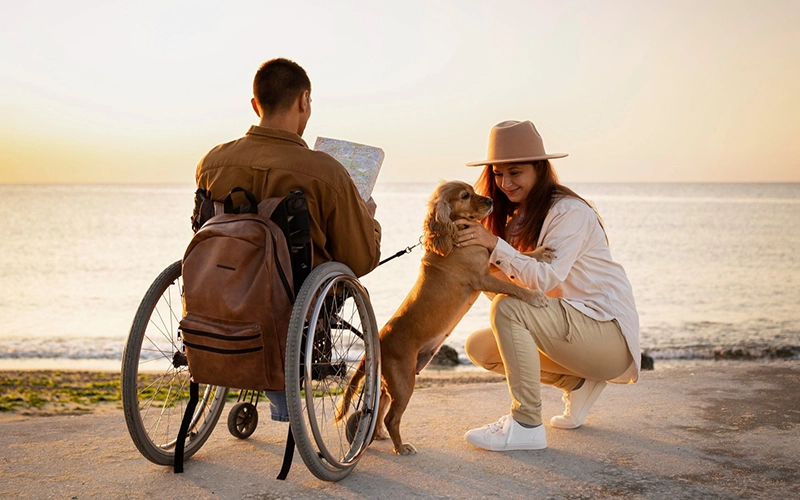
5. You should always check the rules for off-street car parks
As mentioned in the first point, the parking concessions for Blue Badges only apply when you park on-street. There are lots of private off-street car parks that offer free, dedicated parking spaces for disabled people, but you will need to check the signage to make sure.
You should never assume you can park in an off-street car park with your Blue Badge, or you might risk getting a fine. Scheme customer Helen shared her experience of this happening to her in this article.
6. You will need to double-check the rules when parking in London
London is the city with the largest population in the UK. So, it is no surprise some London boroughs have their own parking rules that differ from other councils. In some cases, this means you cannot park on yellow lines, and you may even need to have a special Red Badge, for example, in the City of London.
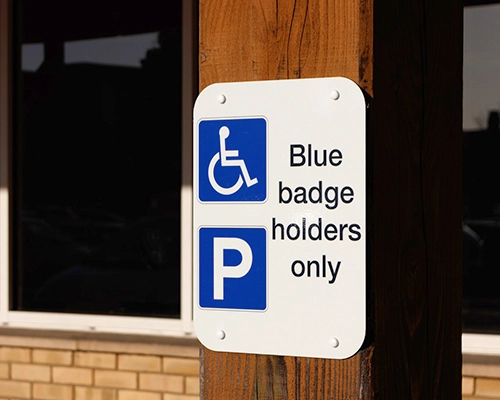
Here are a couple of other rules to be aware of in London:
- Make sure you clock in: If you park somewhere with a time restriction, then make sure you display your parking clock clearly, with the quarter-hour time of when you arrived.
- Don’t park on pavements: We all know how annoying it can be when a car is blocking our way on the pavement. Pavement parking is not allowed in London (except where there are signs saying it is permitted), and you should do so without causing an obstruction to others. Generally, this means you can only place two wheels on the pavement to ensure sufficient space for pedestrians, buggies and mobility scooters.
You can find more information about using your Blue Badge in London on this Government website.
Register Online
Interested in joining the Scheme?
The Motability Scheme offers an all-inclusive package. If you are in receipt of a qualifying mobility allowance you can use it to lease a car, scooter, powered wheelchair or Wheelchair Accessible Vehicle. The Scheme provides flexible and hassle-free access to a brand-new, reliable vehicle of your choice. As well as a great choice of cars, we also provide a wide range of Wheelchair Accessible Vehicles, scooters and powered wheelchairs.
Eligibility
- Enhanced Rate of the Mobility Component of Personal Independence Payment (PIP)
- Higher Rate Mobility Component of Disability Living Allowance (DLA)
- Higher Rate Mobility Component of Child Disability Payment – Scotland
- War Pensioners’ Mobility Supplement (WPMS)
- Armed Forces Independence Payment (AFIP)
About Modern Mobility
We are mobility experts, supplying mobility scooters, powerchairs, wheelchairs, walking aids, stairlifts, and other market-leading products in the mobility industry. We pride ourselves on making your lives that little bit easier. By keeping your freedom & independence. If you or someone you know need assistance with any mobility products or would like to know more call Modern Mobility, and speak to an expert or contact us online.
- info@modernmobility.co.uk
- Blackburn: 01254 680203
- Clitheroe: 01200 760006
- Leicester: 0116 263 0600
- info@modernmobility.co.uk
- Blackburn: 01254 680203
- Clitheroe: 01200 760006
- Leicester: 0116 263 0600






